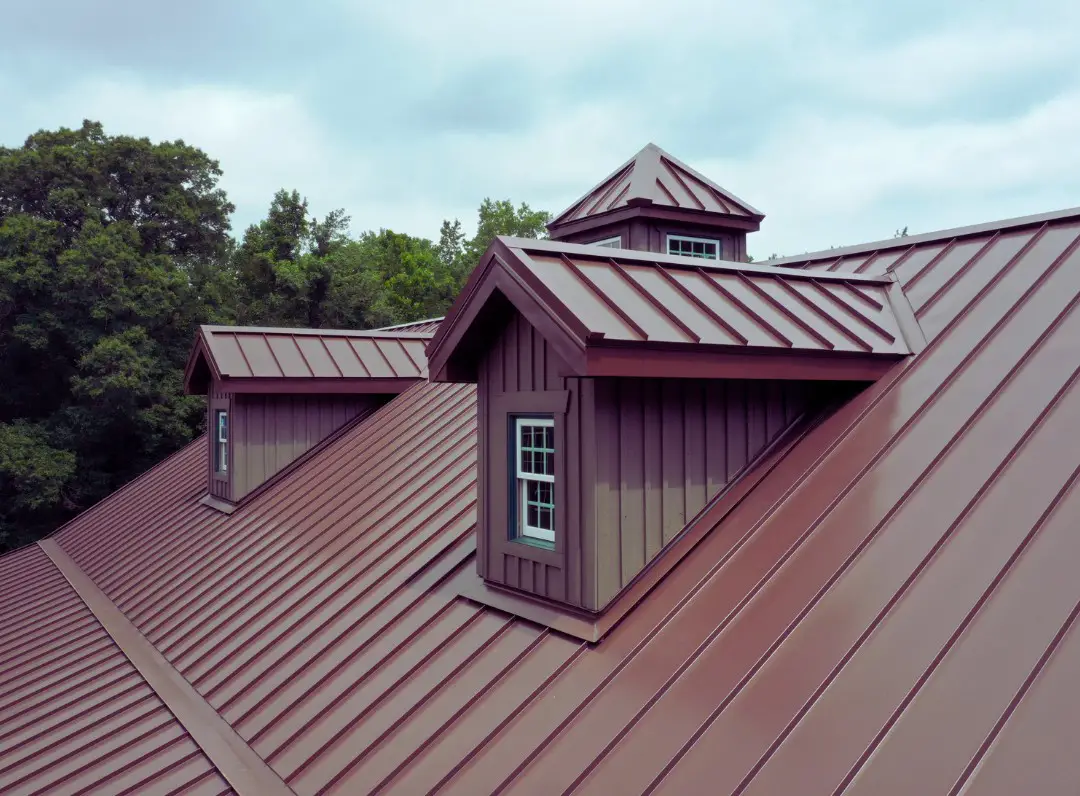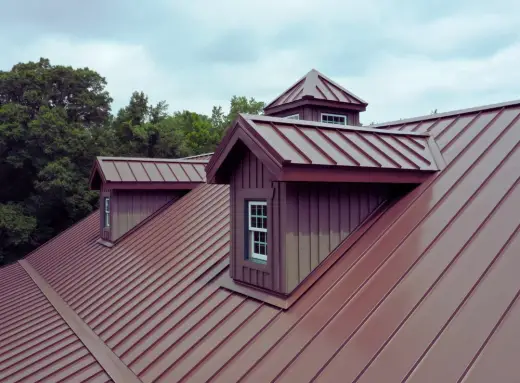Metal roofing guide, Home roof advice, Property durable materials, Building construction tips
Metal Roofing Guide – Top 6 Metal Roof Myths Dispelled!
10 Mar 2023
When you think of a metal roof, what comes to mind? For some, it may be the image of an old, rusty barn. For others, it could be a sleek and modern design on a contemporary home. But regardless of your preconceived notions, several myths and misconceptions about metal roofing persist in the minds of homeowners and contractors alike.
As climate change threatens our planet, sustainable and energy-efficient building materials are becoming increasingly essential. Metal roofing boasts impressive durability and longevity, has a low environmental impact, and can help reduce energy costs. Read more to learn about metal roofing benefits.
In this article, we will talk about the top 5 metal roof myths dispelled. This content will help you break the previous myths preventing you from metal roofing.
Top 5 Metal Roof Myths
Metal roofing is one of the best roofing methods for its durability, longevity, and sustainability. However, despite its many benefits, several myths and misconceptions remain. Here are the top 5 metal roof myths and the truth behind them:
Myth 1 – Metal Roofs Are Noisy
The myth that this roofing type is noisy is a common misconception that likely stems from old barns or sheds with bare metal roofs that produce a loud, tinny noise during rainfall. However, modern metal roofing materials are designed to provide superior insulation and noise reduction.
Factors contributing to noise levels in this building element include the roof design, the thickness of the metal panels, and the type and quality of insulation and underlayment. Proper installation techniques can significantly reduce noise levels, such as using a sound-deadening underlayment or installing metal panels over a layer of rigid foam insulation.
Furthermore, metal roofs can actually be quieter than other roofing materials. In fact, metal roofs with proper insulation and underlayment have been found to produce less noise than asphalt shingle and concrete tile roofs.
Myth 2 – Metal Roofs Are Prone to Dents
The misconception that metal roofs are susceptible to dents still prevails in many homeowners’ minds. This myth likely stems from outdated perceptions of this building element, often associated with thinner materials that needed insulation and were more prone to damage.
However, modern metal roofing is designed to be highly resistant to dents and other types of damage, even in the face of extreme weather conditions. Studies have shown that metal roofs are some of the most durable roofing materials available, with the ability to withstand hail, heavy rain, and strong winds.
Factors that can impact a metal roof’s resistance to dents include the metal’s thickness, the installation’s quality, and the roof’s regular maintenance. Homeowners can ensure that their metal roofs remain in top condition by selecting high-quality materials. Besides working with experienced contractors, conducting regular inspections and maintenance will also help maintain the roof condition.
Myth 3 – Metal Roofs Attract Lightning
The belief that metal roofs attract lightning has existed for a long time. That is often repeated by well-meaning but misguided individuals. However, this myth is untrue and can be easily debunked with scientific knowledge and common sense.
While it is true that metal is a good conductor of electricity, this does not mean that metal roofs attract lightning. Lightning tends to strike the highest point in a given area, regardless of whether that point is made of metal or not. Therefore, if your home is at the highest point in your area, it may be at a higher risk for lightning strikes, regardless of what your roof is made of.
Still, it’s important to take steps to minimize the risk of lightning strikes on your home. This can include selecting a safe location for your home, ensuring that your roof is properly grounded, and working with an experienced roofing contractor who understands how to install this building element properly.
Myth 4 – Metal Roofs Are Heat Magnets
Many homeowners may be wary of metal roofs when choosing a roofing material due to the misconception that they attract and absorb heat. However, many factors are influencing this myth. On the other hand, metal roofing materials are highly reflective and help to keep homes cooler by reflecting sunlight and preventing heat buildup.
It may stem from the assumption that metal is a highly conductive material. While this is true, it doesn’t necessarily mean that metal roofs will attract and absorb heat. In fact, the opposite is true. They are specifically designed to reflect heat and keep homes cooler. That helps to make them a great choice for homeowners who want to improve their energy efficiency and reduce their cooling costs.
Special coatings can also be applied to roof materials to enhance energy efficiency. For example, ceramic paint can be used to increase the amount of sunlight that is reflected and keep homes even cooler.
Myth 5 – Metal Roofs Are Expensive
Another common myth is that they are very expensive. This has come from metal roofs having a higher initial cost than other roofing materials, such as asphalt shingles or concrete tiles. Additionally, some people may assume that metal roofs’ durability and longevity make them luxury item that is only accessible to the wealthy.
However, this myth is only partially accurate. While metal roofing materials can have a higher upfront cost than other options, they are often a cost-effective choice in the long run. They are highly durable and can last up to 50 years or more. It means saving homeowners significant money on replacement and repair costs over time.
Furthermore, they are highly energy-efficient and can help to lower homeowners’ heating and cooling costs. They reflect sunlight and prevent heat buildup, reducing the need for air conditioning and lowering energy bills.
Myth 6 – Metal Roofing is Too Heavy for a House
The myth that metal roofing is too heavy for a house has come from the belief that metal is a dense and heavy material. However, metal roofing materials are very lightweight and can be installed on almost any home without compromising the structure’s integrity.
Most metal roofing materials weigh between 50 and 150 pounds per square foot. It is significantly less than other roofing materials, such as concrete tiles or slate. Additionally, modern metal roofs are designed to be structurally sound and can withstand extreme weather conditions, including heavy snow loads and high winds.
Metal roofing guide – conclusion
It is important to dispel these myths as they may discourage homeowners from considering metal roofing a viable option. Metal roofing materials offer many benefits, including durability, longevity, energy efficiency, and environmental sustainability. By selecting high-quality materials, working with experienced roofing contractors, and conducting regular maintenance, homeowners can enjoy the many benefits of metal roofing for years to come.
Comments on this Building roof materials guide article are welcome.
Buildings
Key Buildings in Scotland Articles – architectural selection below:
Comments / photos for the Metal roofing advice page welcome

